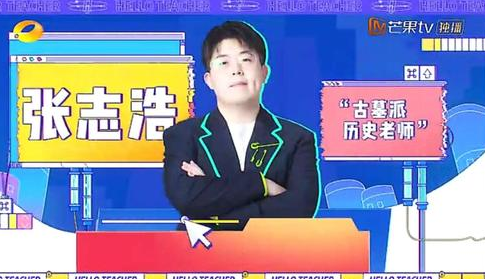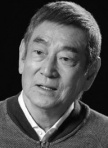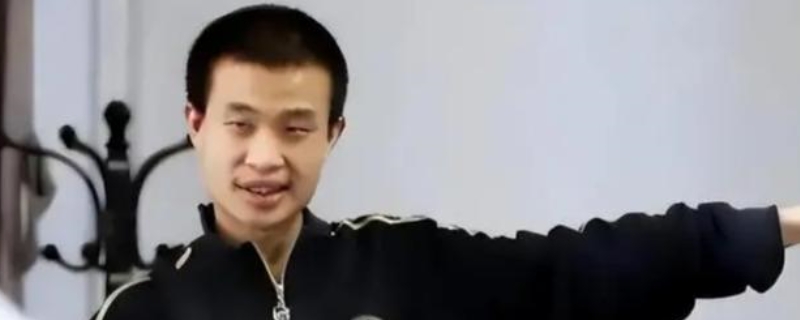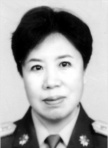姓名:伊迪·塞奇威克Edie Sedgwick
更多名:Edith Minturn Sedgwick (本名)
昵称:Princess
职业:演员
国家:美国
出生日期:1943-04-20
去世日期:1971-11-16
星座:白羊座
出 生 地:美国圣巴巴拉加州

Edie Sedgwick was a bright social butterfly whose candle of fame burned brightly at both ends. Born into a wealthy White Anglo-Saxon Protestant family of impressive lineage Edie became a "celebutante" for her beauty style wealth and her associations with figures of the 1960s counterculture.Edie was born in Santa Barbara into a prominent family plagued by mental illness. Her father Francis Minturn Sedgwick (1904-1967) was a local rancher who had experienced three nervous breakdowns prior to his 1929 marriage to Alice Delano De Forest Edie's mother. Francis also suffered from bipolar disorder and his doctors told Alice's father the Wall Street financier Henry Wheeler De Forest that the couple should not have any children. They eventually had eight: Edie was the fourth of five daughters and the second-to-last of the Sedgwick children born from 1931 to 1945. Edie later told fellow Warhol superstar Ultra Violet that both her father and a brother had tried to seduce her when she was a child. She once found her father in flagrante delicto with another woman and after she tried to tell her mother about his offense her father denounced her as insane and called the doctor. In Edie's confession to Ultra Violet she claimed "They gave me so many tranquilizers I lost all my feelings."The Sedgwicks were an old line of WASPs whose lineage included Judge Theodore Sedgwick (1746-1813) who had served as the Chief Justice of the Supreme Judicial Court of Massachusetts and later Speaker of the House of Representatives in the time of George Washington. The Judge's wife Pamela Dwight Sedgwick (1753-1807) had lost her sanity mid-life. The roots of the mental illness that plagued the Sedgwick family likely extend as far back as Pamela Dwight Sedgwick.Edie was raised on a 3000-acre ranch in the Santa Ynez Valley bought with money inherited from Alice's father. The family fortunes improved even further in the early 1950s when oil was discovered on the ranch. The Sedgwick children were educated in a private school constructed on the ranch and given daily vitamin B shots by a local physician.Despite their prosperity Edie's upbringing was plagued with trauma. Her brother Minty was an alcoholic by age fifteen and eventually committed suicide at the Silver Hill Hospital in New Canaan Connecticut in 1964 the day before his twenty-sixth birthday. Her other brother Bobby also was troubled by psychiatric problems and was institutionalized after suffering a nervous breakdown in the early 1950s while attending Harvard. He crashed his motorcycle into a bus on New Year's Eve 1964 and died two weeks later.Edie suffered from bulimia in school which continued into her adult life. Edie was first institutionalized in the fall of 1962 at the Silver Hill mental hospital (where her brother Minty later died). After wasting away to ninety pounds she was transferred to the far stricter Bloomingdale New York Hospital's Westchester County facility. On a furlough from Bloomindale she became pregnant and had an abortion.In the early 1960s Edie lived in Cambridge Massachusetts while attending Radcliffe College. Edie studied sculpture and spent her time partying and driving her Mercedes. At her therapist's office she met recent Harvard graduate Chuck Wein who was living a bohemian existence and styled himself as an Edwardian dandy. After she turned 21 in 1964 Eddie left Cambridge for New York moving into her invalid grandmother's 14-room Park Ave. apartment and spent her nights at the top clubs and discotheques.Wein came to New York as well and became determined to transform Edie into a social butterfly. In January 1965 she was introduced to Andy Warhol one of the new gods of Pop Art. Wien began bringing her to his work-living space "The Factory" on a regular basis. Warhol had no illusions about Chuck Wein but he apparently was attracted by the hustler's blonde good looks. Blessed or cursed with the soul of a promoter Wein was continually plotting a strategy to move Edie up into the New York demimonde and further into society.During her visits with Wein to The Factory Warhol began inserting her into his films. She made her first two brief appearances in "Vinyl" and "Horse." Andy took both Edie and Wein to Paris in April 1965 for an opening of a show.When he returned to New York City Warhol announced that he was crowning Edie "the queen of The Factory" and commissioned screenplays for her. Wein became his new screenwriter and assistant director beginning with "Beauty No. 2" which starred Edie and premiered at the Cinematheque on July 17 1965. "Beauty No. 2" made Edie Sedgwick the leading lady of underground cinema. Her on-screen persona was compared to Marilyn Monroe and she became famous among the independent film glitterati. Her association with Warhol helped secure both his reputation and hers.Edie appeared in Vogue in August 1965 as a "youthquaker" as well as a fashion layout for Life magazine in the September 1965 issue. On February 13 1966 Edie (along with Warhol and Wein) were photographed for The New York Times Magazine. With the glamorous Edie in tow Warhol made the rounds of parties and gallery openings and the dynamic duo generated reams of copy and free publicity. Thousands of fans mobbed them at an opening at the University of Pennsylvania. Originally an outsider Warhol was now wooed by wealthy socialites and becoming a major part of the art establishment.In 1966 Warhol approached his musical "discovery" Lou Reed with a proposition. According to Reed "Andy said I should write a song about Edie Sedgwick. I said 'Like what?' and he said 'Oh don't you think she's a femme fatale Lou?' So I wrote 'Femme Fatale' and we gave it to Nico."Her newfound celebrity would prove to be her undoing after many urged Edie to leave Warhol for the mainstream cinema. One of these people was Bob Dylan's assistant Bob Neuwirth who became Edie's lover wooing her with the promise of starring in a film with his enigmatic boss. Edie was under the impression that Albert Grossman Dylan's manager was going to offer her a film contract. She also briefly appeared in D.A. Pennebaker's documentary "Don't Look Back."Though Edie reportedly also harbored amorous feelings for Dylan it is unlikely that her feelings were returned or ever consummated. However Edie is one of the women pictured on the inner sleeve of Dylan's classic "Blonde on Blonde" album (released May 16 1966) and she was rumored to be the inspiration of the song "Leopard Skin Pill-Box Hat." In February 1966 Warhol told her about Dylan's secret marriage to Sara Lownds. Edie was devastated. According to Paul Morrissey a Factory regular Edie realized that "maybe [Dylan] hadn't been truthful."Edie's and Warhol's relationship was further strained by her dissatisfaction with her decreasing role in Warhol's life. They also argued over money. Edie had always picked up the tab when the Factory regulars hit the town and she attacked Warhol over his failure to pay her money from the films she had been in. Warhol claimed that the films were unprofitable and told her to be patient.Edie's last known film with Warhol was "Lupe." (She may also have appeared in "The Andy Warhol Story" a lost film for which the footage was either lost or destroyed.) In February 1966 Edie decided to part ways with Warhol. According to Gerard Malanga a Factory regular "Edie disappeared and that was the end of it. She never came back."In the tapes Edie made for "Ciao! Manhattan" she admitted that she had become addicted to her affair with Neuwirth. While they were together she was consumed by lust but when they were apart she turned to pills for comfort.She tried modeling again and appeared in the March 15 1966 edition of "Vogue." Her modeling career never took off however as the fashion industry shunned people with drug problems. She then turned back to acting auditioning for Norman Mailer's staging of "The Deer Park" but Mailer turned her down. Edie "wasn't very good" Mailer remembered. "She used so much of herself with every line that we knew she'd be immolated after three performances."By the end of 1966 Edie's star had gone into eclipse and she never recovered. She was badly addicted to drugs and in six months she spent $80000. A typical breakfast in this period was a saucer filled with speed. To support her habit she stole antiques and art from her grandmother's apartment and sold them for money. She also turned to dealing but got busted was briefly incarcerated and was put on probation for five years. Then in October 1966 Edie's apartment on East 63rd St. caught on fire by candles. She suffered burns on her arms legs and back and was treated at Lenox Hill Hospital.In 1966 Edie returned home to California where she was committed to a mental hospital. After she was discharged she moved back to New York and took a room at the Chelsea Hotel where her drug addiction worsened. By early 1967 her drugged-fueled behavior was so erratic Neuwirth broke up with her. Edie subsequently took up with her fellow Warhol superstar Paul America. He and Edie Sedgwick became lovers united in their common lust for drugs and they lived together for a brief time at the Chelsea Hotel and indulged heavily in speed. Their relationship was an on-again/off-again affair and eventually friction over control issues forced them apart.America later appeared with Edie in the long-gestated film "Ciao! Manhattan". This was supposed to be Edie's breakout role but the film's execution by Warhol acolytes was amateurish. Shooting on "Ciao! Manhattan" which would prove to be Edie's final film commenced in April 1967. The shooting was anarchic with the filmmakers and the actors addicted to speed which was injected by a physician with whom the production company had set up a charge account. At one point America left the set and never returned.After America's departure Edie wound up in Gracie Square Hospital where she learned of her father's death on October 24 1967.After her discharge Edie shacked up in the Warwick Hotel with the screenwriter L.M. Kit Carson who attracted the fragile Edie with the promise of a screenplay written for her but ultimately he was unable to deal with the erratic behavior stemming from her drug abuse and left. Edie wound up in Bellevue Hospital and after being discharged due to the intervention of her personal physician she overdosed on drugs and was committed to Manhattan State Hospital. By late 1968 Edie was a physical and emotional wreck: by the time she returned to the family ranch for Christmas she was barely able to walk and talk the result of poor blood circulation in her brain. She recovered and moved into an apartment near U.C. Santa Barbara in 1969 but by August she was institutionalized again after a drug bust. She met her future husband Michael Post during her stay in the psychiatric ward of Santa Barbara's Cottage Hospital though upon her discharge she became the moll of a motorcycle gang in order to obtain drugs. Known as "Princess" by the bikers she was very promiscuous sleeping with anyone who would supply her with heroin. She was institutionalized again in 1970.Edie was furloughed from the hospital in the summer of 1970 to finish filming "Ciao! Manhattan" the last parts of which feature her clearly in the throes of drug dependency. Under the supervision of two nurses she played out her scenes including a shock treatment scene (electro-convulsive therapy) filmed in a real clinic. Ironically she was soon back at the clinic for real suffering from delirium tremens where she received actual shock treatment therapy. She underwent a minimum of 20 electro-convulsive treatments from January to June 1971.Edie married Michael Post on July 24 1971 managing to stay clean until October. However that fall she was prescribed a pain pill to treat a physical debility. In addition her doctor prescribed barbiturates possibly to help her sleep and frequently boosted their effects with alcohol. On the night of November 15 1971 Edie went to fashion show at the Santa Barbara Museum and was filmed for the last time in her life. The television documentary "An American Family" was being filmed at the museum that night and Edie - attracted by the cameras as a moth is to flame - walked over and began talking to Lance Loud one of the subjects of the documentary.After the fashion show Edie went to a party but was asked to leave after her presence caused another guest to rave at her for being a heroin addict. Edie who had been drinking called her husband to come retrieve her from the soirée. Back at their apartment Edie took her prescribed pain medication and they both went to sleep. That morning when Post awoke at 7:30 AM he found Edie dead next to him. Her death was ascribed as "acute barbiturate intoxication" and was ruled an "Accident/Suicide" by the coroner. Edie is buried in the tiny Oak Hill Cemetery in Ballard California.
【相关文章】
本文地址:https://www.qubaike.com/renwu/cv6812nk.html
声明:本文信息为网友自行发布旨在分享与大家阅读学习,文中的观点和立场与本站无关,如对文中内容有异议请联系处理。







